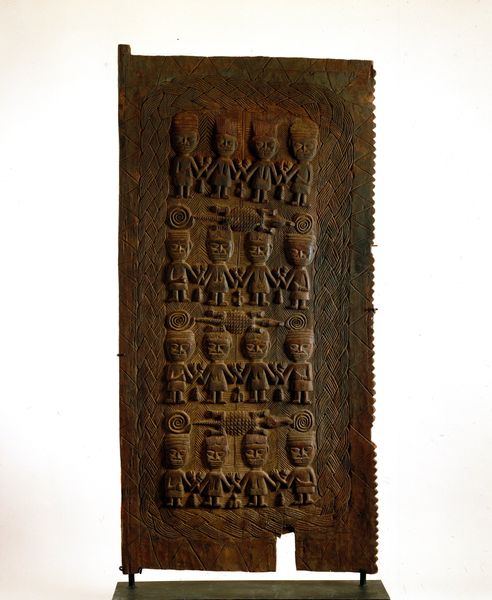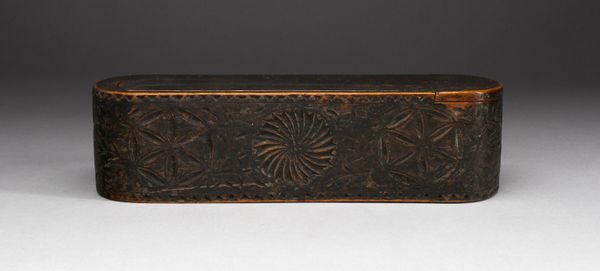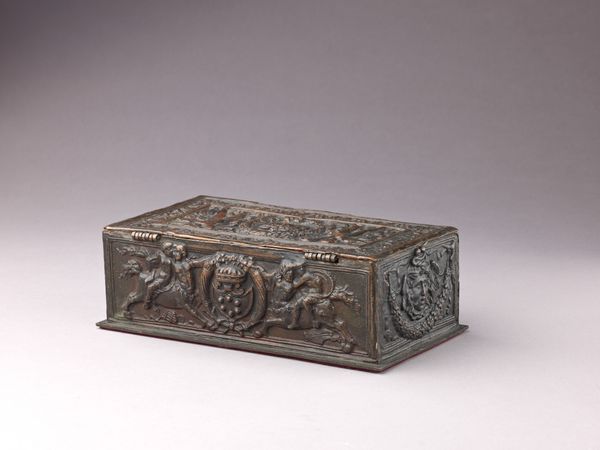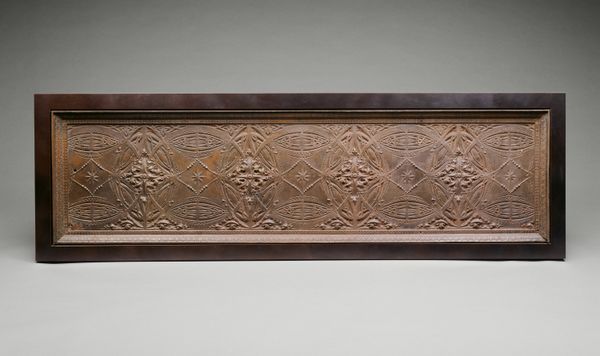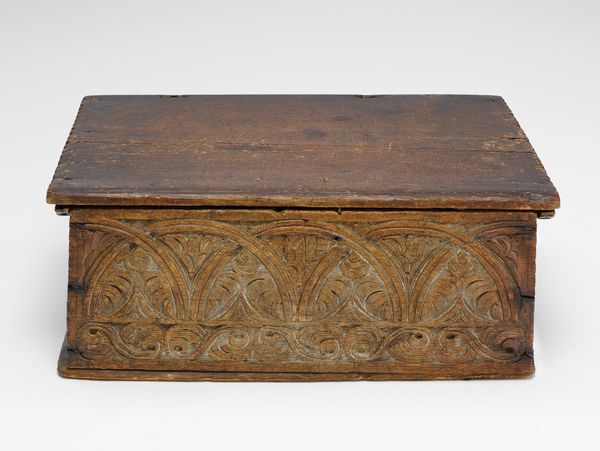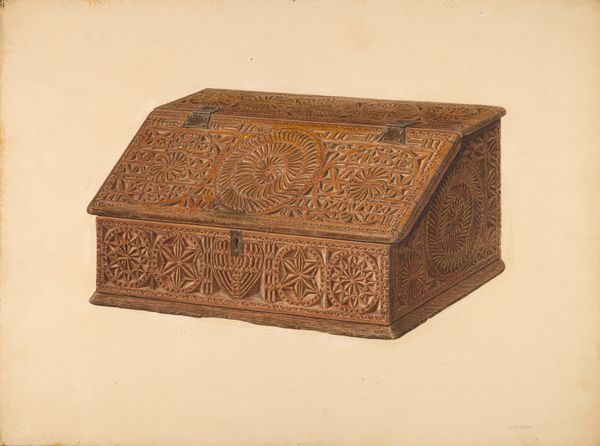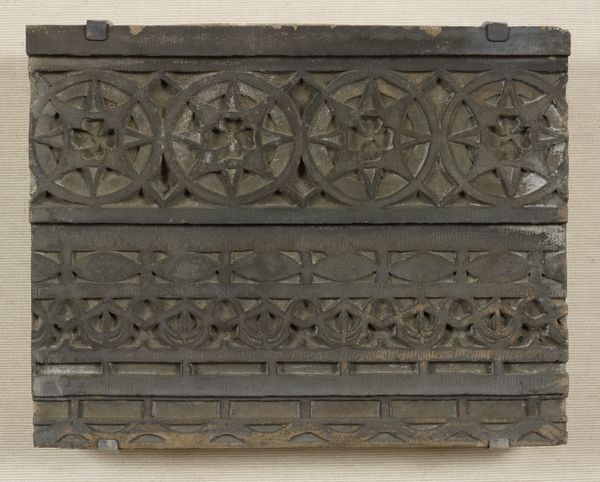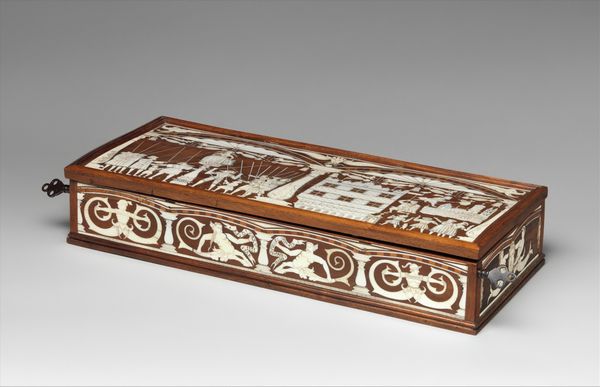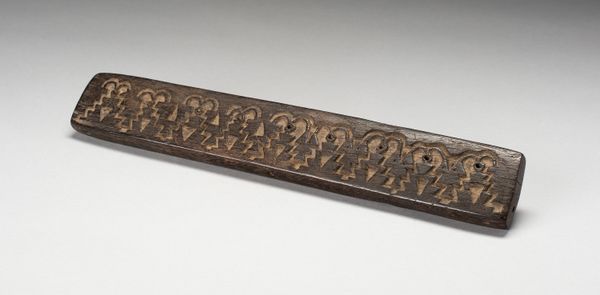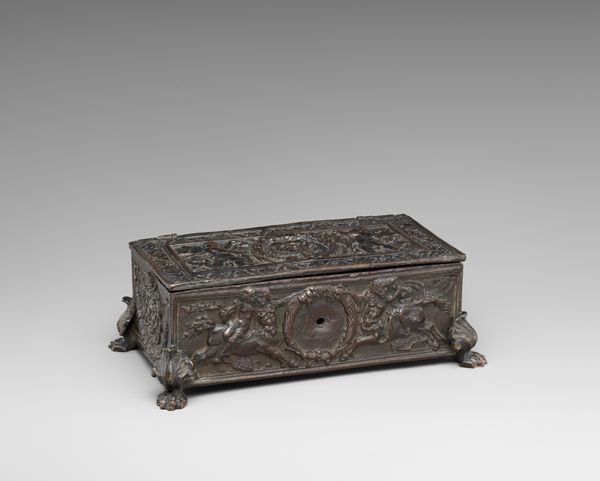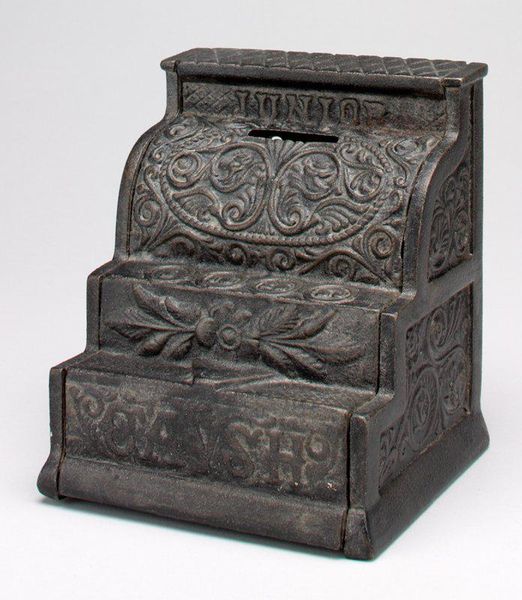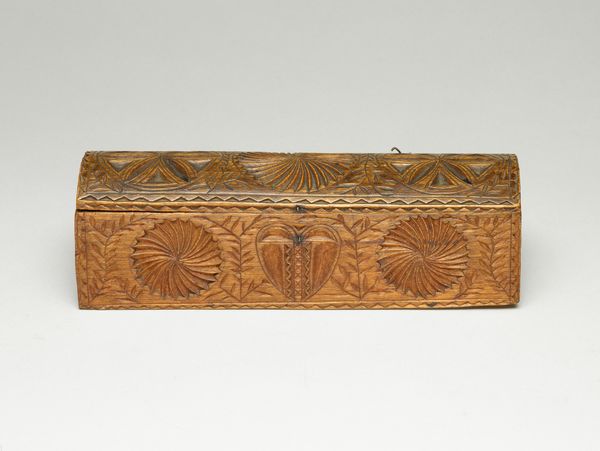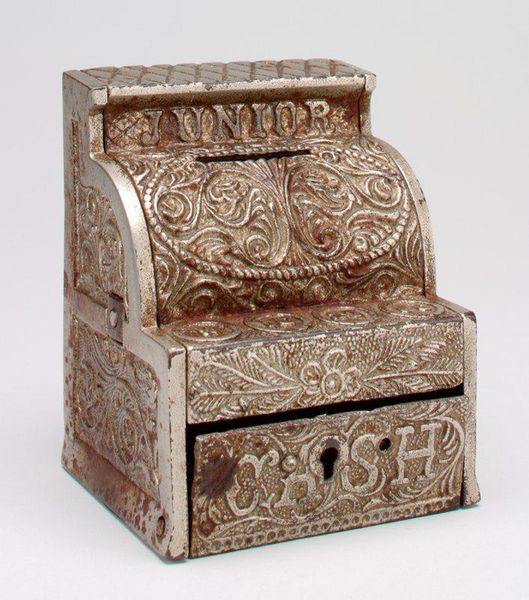
carving, relief, sculpture, wood
#
medieval
#
carving
#
sculpture
#
asian-art
#
relief
#
figuration
#
sculpture
#
wood
Dimensions: 10 1/4 x 28 in. (26.04 x 71.12 cm)
Copyright: Public Domain
This manuscript cover, whose maker is unknown, was likely carved in Asia with simple tools like chisels and knives. The wood’s dark, burnished surface invites you to look closely. Note the crispness of the incised lines, and the complex layering of the composition, which features rows of seated figures and intricately stylized flora and fauna. The choice of a dense hardwood allowed the carver to achieve incredible detail. Wood has been used in sacred arts for millennia, due to its availability, workability, and inherent beauty. Consider the labor involved in its production. The planning, carving, and finishing would have taken considerable time and expertise. This cover was made to protect and honor religious texts. The tradition of wood carving has a long and rich history. Appreciating the skill and time involved in its creation can deepen our understanding of its cultural and spiritual significance. By recognizing the value of materials, making, and context, we challenge traditional hierarchies between art and craft.
Comments
minneapolisinstituteofart almost 2 years ago
⋮
Tibetan monks were prolific translators of sacred texts and other manuscripts used in their ritual practice. Such documents were often given special artistic attention and the larger, more important ones, included decorative covers like this. Most book covers are embellished with divine figures meant to protect the Buddhist philosophy contained within.
Join the conversation
Join millions of artists and users on Artera today and experience the ultimate creative platform.
